 "Nauraushaun" (nauraushaun12)
"Nauraushaun" (nauraushaun12)
04/20/2020 at 18:05 • Filed to: None
 8
8
 17
17
 "Nauraushaun" (nauraushaun12)
"Nauraushaun" (nauraushaun12)
04/20/2020 at 18:05 • Filed to: None |  8 8
|  17 17 |
Matra, purveyors of Frenchness. Matra almost never made a conventional front engine car, unless you count that one weird econo-off-road-proto-SUV-thing. Or the vans they built for Renault! In some ways they couldn’t be more French, in others they’re entirely unique.
I’m going to do a few brief posts about the history of Matra. Because cheap mid-engined cars are cool, and French cars are weird, and I need something to do. Also car content on Oppo can’t hurt. This is part one.
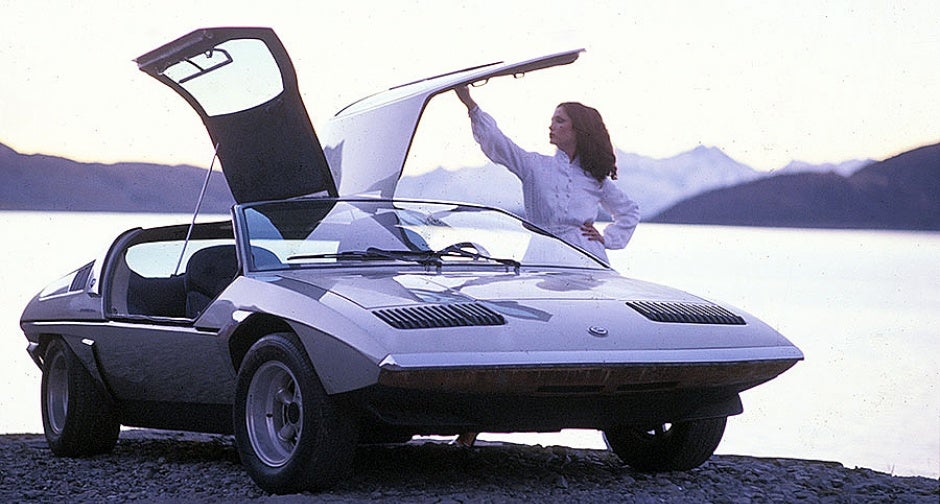 !!!CAPTION ERROR: MAY BE MULTI-LINE OR CONTAIN LINK!!!
!!!CAPTION ERROR: MAY BE MULTI-LINE OR CONTAIN LINK!!!
Matra, the car company, was born from Automobiles René Bonnet, itself born out of Deutsch-Bonnet cars (known as DB, unrelated to Aston Martin’s DB). All building out of Champigny-sur-Marne just a few kilometers South-East of Paris in a move you’d never see in 2020. DB dissolved when its founders couldn’t agree over whether to stick with Panhard engines or switch to the power of Renault, or to build front-wheel drive cars or mid-engined cars. The year was 1961, and while FWD had been done a few times, a mid-mounted road car had not. This paints a lucrative picture of what’s to come.
Automobiles René Bonnet’s first car was the continued production of the existing DB Le Mans, a rather frumpy 2+2 convertible, now renamed the René Bonnet Le Mans and with a Renault 4-cylinder engine rather than a Panhard two-banger. This car may have been dragged along from the older company, but its days were not numbered.
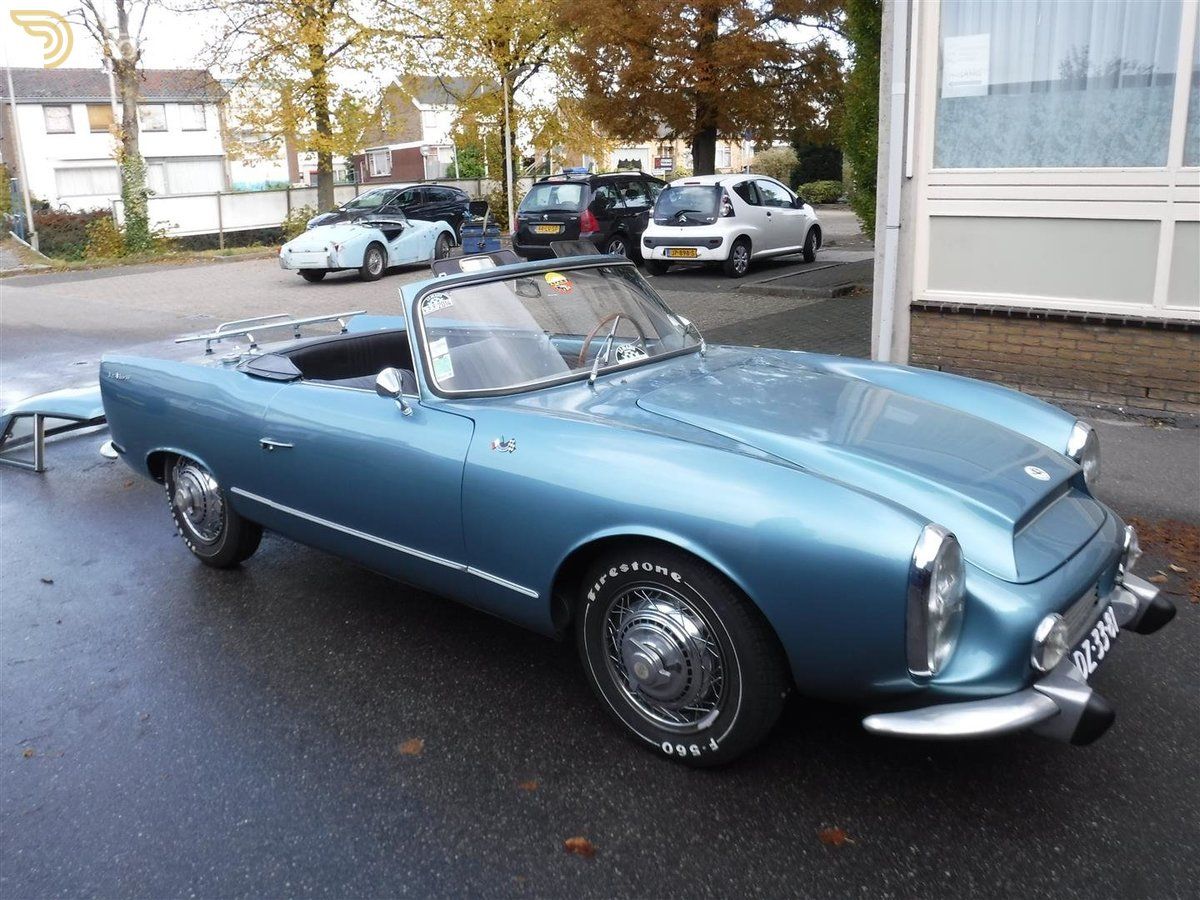
René Bonnet Le Mans. Light, lean, fibreglass, Renault 4-cylinder, 51kW, 700kg
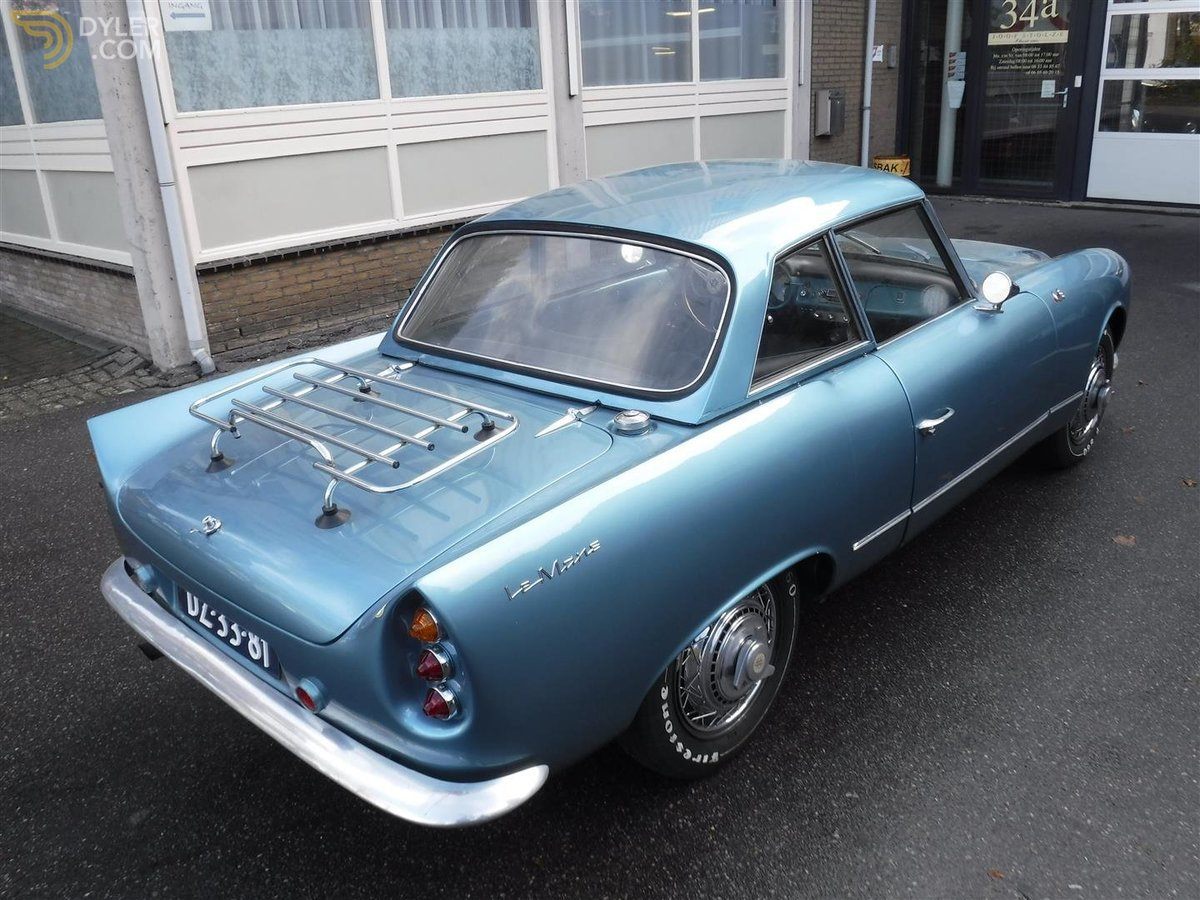
See the tailfins? Part of an effort by DB to design this car to cater to the US, along with generally improved comfort.
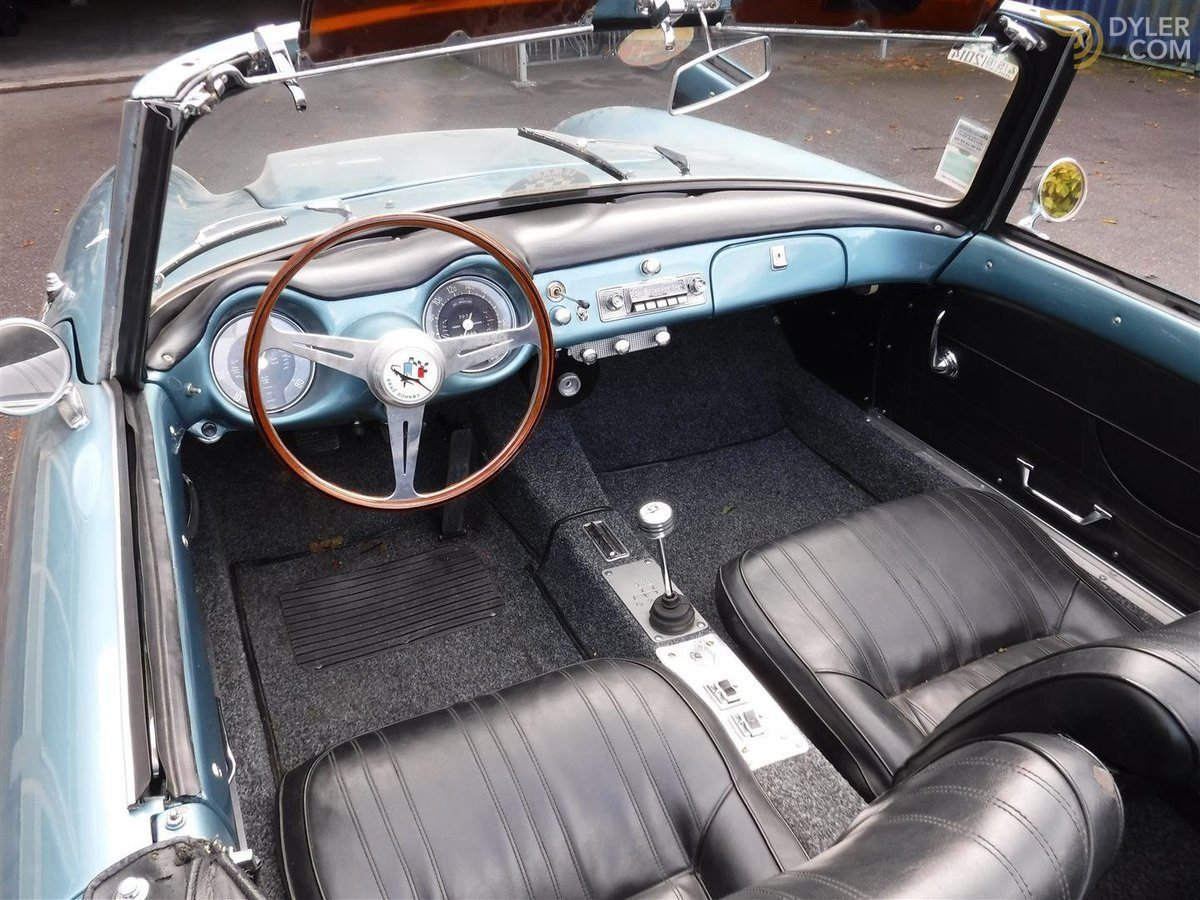
While selling the Le Mans, René Bonnet also reworked it into a lighter and cheaper 2-seater convertible known as the Missile. It was still FWD, though with the engine set behind the drive axle in a front-mid layout, which is sort of cool but not nearly the same as a rear-mid layout.
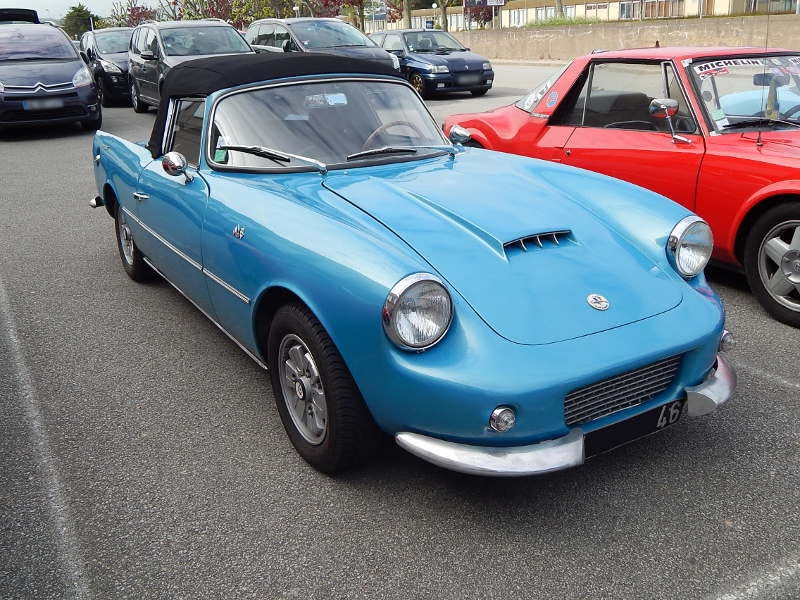
René Bonnet Missile. A similar rear, but single-headlights up front, and visibly less car in front of the wheels as the engine is moved further back. Cheaper, sportier, but available with only a 37kw engine.
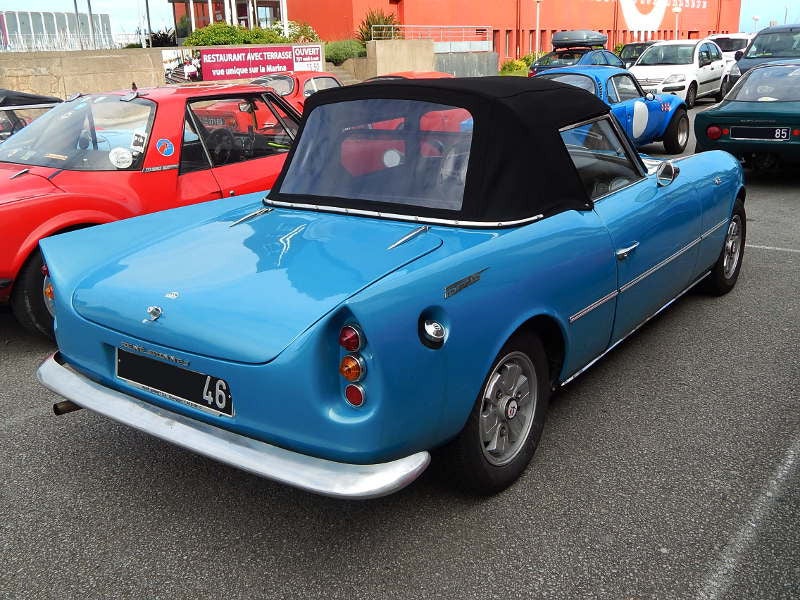
I wonder if the soft-top and lack of luggage rack speak to this car’s lower price point compared to the Le Mans pictured above, or if it’s just how the last 60 years have treated these cars
These little 60s roadsters aren’t really what gets me going, but they’re the start, and an important step along the way.
I leave you with a period ad I stumbled across:
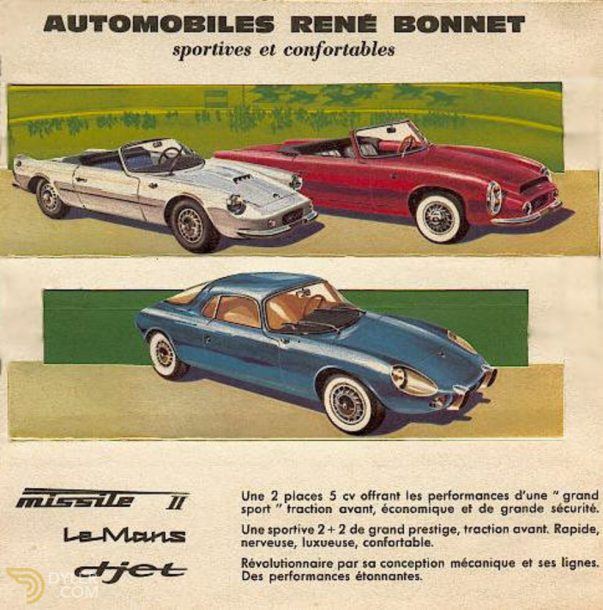
I have been to France a few times and am something of a closet Francophile. Without further
adieu,
I will attempt a translation with not too much Googling:
Missile II
- With 2 seats, 5 cv? Offering the performance...great sport, front wheel drive, economical and of great security!
Le Mans
- With sporty 2+2 of great prestige, front drive. Fast, nervous (meaning...agile? I guess?), luxurious, comfortable.
djet
- Revolutionary by its conception, mechanicals and its lines. The performance is amazing.
The next development for the humble DB Le Mans was to move the engine further back - much further back. But that’s a story for another day. Hopefully tomorrow.
 Chariotoflove
> Nauraushaun
Chariotoflove
> Nauraushaun
04/20/2020 at 18:10 |
|
Oh, I like where this is headed.
 Nom De Plume
> Nauraushaun
Nom De Plume
> Nauraushaun
04/20/2020 at 18:15 |
|
Allez, not just car content. Good car content.
 Who is the Leader - 404 / Blog No Longer Available
> Nauraushaun
Who is the Leader - 404 / Blog No Longer Available
> Nauraushaun
04/20/2020 at 18:30 |
|
Oooooooooooooooooooooooooooooooh I really like this. Matra is basically an unknown to all but the nerdiest US car enthusiasts; it was only a dim recollection before a few Matra posts a while back so I am eager to learn more about a company that I know little about. And of course I am a sucker for some gallic quirkiness.
 RallyWrench
> Nauraushaun
RallyWrench
> Nauraushaun
04/20/2020 at 18:42 |
|
Excellent choice of feature, one of my favorite obsure marques! Check over on the Live and Let Diecast site for a fair bit of old Matra & Bonnet content, a few of us kind of have thing for them. Looking forward to more!
 RallyWrench
> Who is the Leader - 404 / Blog No Longer Available
RallyWrench
> Who is the Leader - 404 / Blog No Longer Available
04/20/2020 at 18:44 |
|
You may find this useful :
https://liveandletdiecast.kinja.com/search?blogId=1580642771&q=matra×tamp=1587422587238
 Who is the Leader - 404 / Blog No Longer Available
> RallyWrench
Who is the Leader - 404 / Blog No Longer Available
> RallyWrench
04/20/2020 at 18:57 |
|
The Matra-Simca Rancho was the only one I was even remotely familiar with, which in itself is already an impressive amount of nerdiness. Thank you.
 RallyWrench
> Who is the Leader - 404 / Blog No Longer Available
RallyWrench
> Who is the Leader - 404 / Blog No Longer Available
04/20/2020 at 19:36 |
|
Nerd to nerd, you’re welcome. The green Rancho is one of my favorite 1:43s. A plan was hatched here on Oppo sometime back between myself, RamblinRover, and old school Opponaut 505Turbeaux to build a Rancho with Audi quattro driveline and a VW TDI engine. It was dubbed the... Maudi Quancho ;)
 Who is the Leader - 404 / Blog No Longer Available
> RallyWrench
Who is the Leader - 404 / Blog No Longer Available
> RallyWrench
04/20/2020 at 19:47 |
|
Well, plan. If such a car existed you have bombarded me with some much appreciated photos. Nevertheless, that sounds like one cool build that needs to happen eventually. Really any Rancho would be cool but a Quancho especially.
 Nauraushaun
> Who is the Leader - 404 / Blog No Longer Available
Nauraushaun
> Who is the Leader - 404 / Blog No Longer Available
04/21/2020 at 02:16 |
|
I think that’s true of most of the world, save for Europe. Parts of Europe even.
I saw a Murena video posted here. It was good and that pretty much led me to making these posts.
 Nauraushaun
> Who is the Leader - 404 / Blog No Longer Available
Nauraushaun
> Who is the Leader - 404 / Blog No Longer Available
04/21/2020 at 02:17 |
|
I’ll get to that one ;) And yes, that in itself is a weird enough thing to know
 Nauraushaun
> RallyWrench
Nauraushaun
> RallyWrench
04/21/2020 at 02:17 |
|
V10 TDI? Be rude not to
 Nauraushaun
> RallyWrench
Nauraushaun
> RallyWrench
04/21/2020 at 02:17 |
|
I will have a look!
 Nauraushaun
> Nom De Plume
Nauraushaun
> Nom De Plume
04/21/2020 at 02:17 |
|
Well, thank you!
 Nauraushaun
> Chariotoflove
Nauraushaun
> Chariotoflove
04/21/2020 at 02:18 |
|
Hopefully it goes where it’s meant to
 Who is the Leader - 404 / Blog No Longer Available
> Nauraushaun
Who is the Leader - 404 / Blog No Longer Available
> Nauraushaun
04/21/2020 at 08:38 |
|
That was really like the second mention of Matra I had ever heard. Same.
 Longtime Lurker
> Nauraushaun
Longtime Lurker
> Nauraushaun
04/22/2020 at 10:25 |
|
“CV stands for chevaux vapeur, or horsepower. But the 4CV is not a 4-horsepower car. CV, it turns out, is used to mean tax horsepower.”
https://www.motherjones.com/kevin-drum/2016/02/here-todays-french-fiscal-horsepower-history-lesson/
 Nauraushaun
> Longtime Lurker
Nauraushaun
> Longtime Lurker
04/22/2020 at 18:35 |
|
Ah yes. I did know this once thanks to the deux che v aux , but it’s pretty confusing.
I find it curious how much impact these sorts of regulations have had on cars. Not only in France, but in Japan where it created a whole new class of car, the kei.